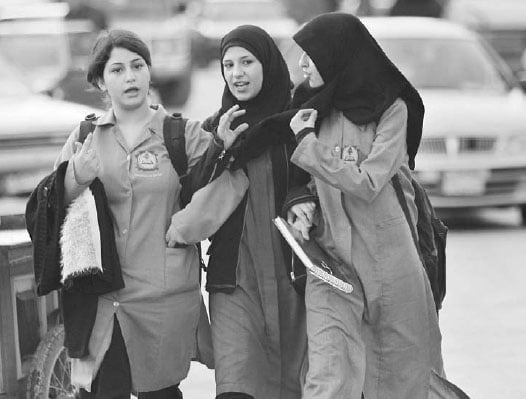
In 2004 the sociologists Ronald Inglehart and Pippa Norris argued that the real clash was not between civilisations, as Samuel Huntington had argued, but between sexes, because of the role played by women, especially in the Muslim world. A revolution among women in such societies was already underway at the time, albeit not overtly. Since the turn of the century a relatively silent transformation of great scope has been taking place: the education and the entry into the labour market of 50 million women in predominantly-Muslim countries. Saadia Zahidi, a Pakistani member of the World Economic Forum’s Executive Committee and head of its initiative on Education, Gender and Work, makes this clear in a well-researched book packed with concrete examples, Fifty Million Rising: The New Generation of Working Women Transforming the Muslim World. Its author describes what is happening as a ‘tsunami’.
Let’s start with the most revealing figures: 155 million women (as opposed to 342 million men) are currently employed in the Muslim world, a 50% increase over 15 years, a third of them having joined the labour market in just the last decade and a half. It is true that they account for only one quarter of the female population of these societies. But ‘the increase in their numbers represents an economic and cultural shift of enormous magnitude. Fifteen million women are renegotiating their own and their families’ norms and values’, the author argues. The US and Europe managed this in half a century. To give one example, in Pakistan, where in 1990 only four million women worked out of a population of 107 million, while the population has since doubled, the number of women workers has risen fourfold.
Everything starts with the education of young women, the greatest investment for a country’s development, according to the World Bank. In Saudi Arabia, fewer than 2% of young women went to university in 1970. By 1990, 9% did so. Today the figure is 57%, on a par with the US in 1983, and more than in Mexico, China, Brazil or India. In Algeria, the percentage of women among university graduates has risen from 20% to 40%. Something similar has happened in Iran. In Jakarta and Kuala Lumpur there is now talk of ‘Asiatic tigresses’. Naturally there are exceptions. Pakistan, for instance, trails well behind in this area, and sub-Saharan Africa likewise. Research suggests that the 30%-level of women in the labour force constitutes the tipping point where things start to change, and they now represent 31% in the Islamic world.
Here is another thing: the type of education these young women are choosing. There are only five countries in the world with a higher proportion of women than men studying science, technology and engineering. Two of them, Kuwait and Brunei, are predominantly Muslim. Half of the 18 countries where women constitute 40% of such students are Muslim, according to Zahidi. Recent academic years in Egypt have seen almost 34% of the places in these subjects being taken by women, many of whom go on to pursue careers in the same fields, often as tech and online retailing entrepreneurs. This is higher than in the US or Europe, prompting one to ask why it should be that there is such a shortage of women in these fields in the West, and more particularly in Silicon Valley, for example.
The rise of women in education and the workplace in these countries has been accompanied by a reduction in the fertility rate. And although many educated women leave the labour market when they marry and have children, this is a trend that is on the wane. Even the existence of large families, which in a sense help to preserve the status quo, may help them continue working while their children are little. At any rate these developments are also contributing to a change in customs, to a reduction in polygamy in many of these societies –virtually non-existent among young people– and to a large extent to the end of arranged marriage. Educated mothers, and those who have lived in educated settings, tend also to ensure that their daughters receive higher education too.
Zahidi goes even further in claiming that the professional rise of women in the Muslim world is making a significant contribution, and in future will contribute even more, to the growth of their economies, with an ensuing global impact.
Clearly there are major differences between Muslim countries. Only six of them have laws protecting against discrimination on the grounds of sex in employment contracts: Azerbaijan, Kazakhstan, Kosovo, Mauritania, Morocco and Tajikistan. And very often studying and working are not accompanied by basic freedoms for women. Rates of mobile phone ownership are significantly lower among women than among men in the majority of these societies. It is a revolution that is by no means assured. It is ‘exponential, but not inevitable’, Zahidi states. The forces of conservatism may push it back –as has already happened– or armed conflicts may thwart it, as has occurred in Syria. But if it continues, it will change many things.


